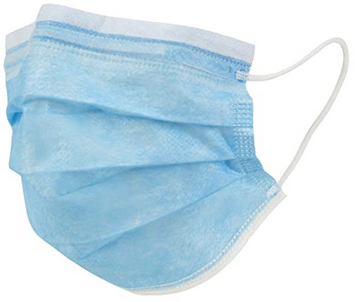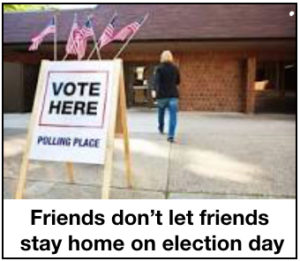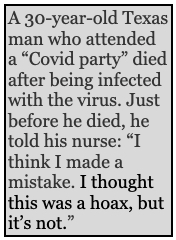Reading time – 5:12 . . . – Updated July 20, 2020
 Dave Nelsen is a colleague who penned the essay that follows and, at my request, is allowing me to post it for you. His message isn’t just timely; it’s going to remain urgent for a long time because this pandemic isn’t going away any time soon.
Dave Nelsen is a colleague who penned the essay that follows and, at my request, is allowing me to post it for you. His message isn’t just timely; it’s going to remain urgent for a long time because this pandemic isn’t going away any time soon.
Dave describes himself as an engineer, entrepreneur (5 start-ups), and professional speaker focused on helping business people raise their TQ’s (Technology Quotients), because technology is how we get things done with greater success.
What I’ll tell you is that he is a highly sought after presenter because of his obvious knowledge and expertise and his compelling presentation skills. I’ll also tell you that he’s a most generous guy, which explains his offering to you today.
On Masks and Social Distancing
First, the bottom line:
Whenever you are closer than 6 feet to another person and not wearing a mask, you are probably helping to accelerate the spread of COVID-19, damaging the US economy, killing jobs and potentially causing more people to die.
Even if every American were to become infected with the SARS-CoV-2 virus (331 MM of us), there are vastly different consequences based on the speed of the spread of the disease. If COVID spreads slowly, statistically 3.3 MM people will die* but the economy can be kept open.
If COVID spreads too fast, we will overwhelm the healthcare system. In that case, it’s not just additional people infected with the virus who will die; it’s potentially anybody else who needs access to a fully functioning healthcare system. Public health authorities are unlikely to allow our healthcare systems to collapse, so instead, they’ll call for renewed lock downs (which is more likely to happen regionally than nationally), causing economic damage to both our economy and to our people who won’t be able to earn a living. Both could otherwise have been avoided.
Whenever you are closer than 6 feet to another person and not wearing a mask, you are probably helping to accelerate the spread of COVID-19, damaging the US economy, killing jobs and potentially causing more people to die.
If you wear an improvised mask or face covering (as opposed to a NIOSH-approved N95 grade mask certified to block at least 95% of virus-size particles), it provides relatively little protection to you. Instead, it provides protection to the people who are near you (see The Logic of Improvised Masks below). So, flipping the situation, if everyone near you wears an improvised mask and you do not, you are the one who is most protected. Sadly, you are potentially infecting everybody else.
Similarly, if you wear an improvised mask and do not socially distance from people around you who are not wearing masks, you are putting yourself at risk. By putting yourself at risk, you are putting your friends and family at risk, and their friends and families, and their friends and families. Here’s how the math works.
As of July 19, COVID was accelerating in 43 of our 50 states. Of those states, Oklahoma is near the mid-point in terms of speed of spread. In that state, every COVID infection is currently spreading to 1.13 other people (on average). Person-to-person infection time appears to average about 5 days. If you take a risk of getting COVID-19 and you do become infected, on average 30 days later, 2 additional people will be infected because of you, likely those family members closest to you. Not a big deal, right?
A sobering thought experiment
If that exact rate of spread were to continue for a full year, 7,494 total people would be infected because of you (multiply by 1.13 every 5 days for one year). Statistically, that would result in 75 deaths. In terms of killers, that doesn’t put you in the same league as Hitler, Lenin, and Stalin. Instead, you would be in the class of “small-time” serial killers such as Jeffrey Dahmer, Ted Bundy, and the Golden State Killer (AKA Joseph James DeAngelo).
Granted, that rate of spread would be unlikely to continue for a full year because almost every American citizen would become alarmed at the progression and change their behavior. And yes, some of the 7,494 people would almost certainly get infected by somebody else, if not by you. Nevertheless,
Whenever you are closer than 6 feet to another person and not wearing a mask, you are probably helping to accelerate the spread of COVID-19, damaging the US economy, killing jobs and potentially causing more people to die.
Some key parameters about COVID-19
Per the CDC and other scientists:
The SARS-CoV-2 virus is 3-times more contagious than modern influenza.
Roughly one-third of people who have COVID-19 have no symptoms (i.e. they’re asymptomatic) yet can still spread the virus.
The remaining two-thirds infected with the virus are likely most contagious in the two days immediately before they develop symptoms (i.e. while they are pre-symptomatic).
As you’ve probably realized, it is the “silent propagation” that makes battling COVID-19 so challenging.
More COVID Math
While we now have more than 3MM known cases in the US, the CDC estimates that there are 10X that many actual cases. More than half of the known cases are currently active cases. If the 10X multiplier holds true for actual cases (and it probably does), and assuming (generously) that just 25% of active cases are currently in a contagious stage, every person you break social distance with brings a 1% risk of exposure, which is about what scientists find when randomly testing any large group of US citizens. If you have an event with 10 friends, it’s a 10% risk of exposure. And so on. To be clear, exposure does not mean that you’ll definitely get sick. But is it worth the risk, given the consequences? [See the inset at left. JA]
Whenever you are closer than 6 feet to another person and not wearing a mask, you are probably helping to accelerate the spread of COVID-19, damaging the US economy, killing jobs and potentially causing more people to die.
The Silver Bullet
The other reason to try to slow the spread of COVID-19 is that it buys us time to find a silver bullet. There are several potential silver bullets in the works, including many vaccines under development based on four different strategies. In addition, countless existing drugs are being tested for therapeutic efficacy and scientists are trying to develop fast and accurate self-tests. Any of these may be helpful but all take time. We can all help to buy that time.
Recently, we’ve seen a new study that shows that 13% of people who had a symptomatic COVID infection and 40% of people who had an asymptomatic COVID infection, have no detectable antibodies 2 – 3 months later. That means that even if you’ve had COVID, you might be able to get it again. This is true with other coronaviruses, such as the common cold. We may lose our immunity relatively quickly after infection. So, try not to get COVID-19 the first time . . . or there might be a second time.
Until we have that silver bullet we have two very effective strategies to battle this disease: 1) Wear a mask, practice good social distancing, wash your hands well and frequently and be careful with surfaces; or, 2) Lock down the economy. Can we all agree that #1 is the better way to go?
The Logic of Improvised Masks
While the science is not yet definitive, here’s what we think we know based on studies of SARS-CoV-1 (a 2002 coronavirus that had a 9.6% mortality rate) and our understanding of filtration, gravity, etc.
In order to get sick, you need to “receive” about 1,000 virus particles. They’re very small and in the scheme of things, that’s not an exceptional amount. If you receive less than 1,000 virus particles, you probably won’t get COVID-19.
1,000 virus particles must be “expelled” in a relatively large droplet (sneeze, cough, yell, karaoke, etc.; – yes, even that last one is true). Large droplets are subject to gravity. They fall. It’s hard for a large droplet to travel 6 feet between two people at face height. That’s the reason social distancing works.
If you have COVID-19 and wear an improvised mask, any large droplets expelled by you will get caught (mostly) in the mask. While the virus particles will “aerosolize” (leave the mask, inwards and outwards as you breathe), this will happen slowly over time. Anyone around you is unlikely to inhale enough of the virus to get sick.
However, if you wear an improvised mask and a non-socially distanced infected friend does not, large droplets expelled by them can land on your mask. These virus particles will aerosolize (leave the mask, inwards and outwards as you breathe), and while this will happen slowly over time, you are likely to inhale half of them as you spend equal amounts of time inhaling and exhaling. It takes more time but it’s still easy to breathe in more than 1,000 particles.
The problem is that it doesn’t seem to matter if you inhale 1,000 particles all at once or over the course of a day. Either way, you’ll get sick. Your improvised mask provides very little protection for you. Instead, it provides protection for the people who are near you. If everyone near you wears an improvised mask and you do not, you are the one who is most protected even as, ironically, you are potentially infecting everybody else. Don’t be a COVID-19 propagator. Wear a mask AND social distance yourself. And encourage your friends and family to do the same.
We can stay safe and help keep the economy moving and our people employed. Or not.
Remember:
Whenever you are closer than 6 feet to another person and not wearing a mask, you are probably helping to accelerate the spread of COVID-19, damaging the US economy, killing jobs and potentially causing more people to die.
For more information on COVID-19, my favorite non-partisan site is: https://www.worldometers.info/coronavirus/.
————————-
* Because we are unable to test 100% of our population to determine actual infection numbers, mortality rate is not precisely known. However, if we’re sticking with integers, a 1% death rate currently appears to be a better estimate than the original 2% estimate from WHO’s analysis of the Wuhan outbreak. Most current, credible estimates put the infection fatality rate (IFR) somewhere in the 0.4% to 1.4% range. We will have more definitive numbers in the future.
Dave Nelsen is the:
¤ Ernst & Young Entrepreneur of the Year
¤ Vistage Worldwide Speaker of the Year
You can reach him at [email protected].
——————————-

Ed. note: We need to spread the word so that we make a critical difference, so
- Pass this along to three people, encouraging them to subscribe (IT’S A FREEBIE!).
- Engage in the Comments section below to help us all to be better informed.
Thanks!
The Fine Print:
- Writings quoted or linked from my posts reflect a point I want to make, at least in part. That does not mean that I endorse or agree with everything in such writings, so don’t bug me about it.
- Sometimes I change my opinions because I’ve learned more about an issue. So, educate me. That’s what the Comments section is for.
- Errors in fact, grammar, spelling and punctuation are all embarrassingly mine. Glad to have your corrections. Responsibility for the content of these posts is unequivocally, totally, unavoidably mine.
JA
Copyright 2025 by Jack Altschuler
Reproduction and sharing are encouraged, providing proper attribution is given.

